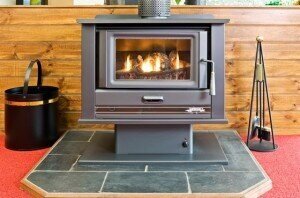Gas Log Fire vs Wood Fire: Which one should you choose? Key Differences
If you are wondering about the key differences between a gas log fire and a traditional wood fire, then you have come to the right place. You will learn in key differences that should help you understand better and make a decision if you need to install one in your home.
While both offer that comforting glow and ambience, the gas log fire is quickly becoming the preferred option for modern Australian households and for good reasons. In this post, we break down the pros and cons of each, and why more homeowners are making the switch to gas log fires.
Aesthetic Appeal
Gas Log Fire:
Gas log fires have come a long way. Today’s models feature realistic ceramic logs, sleek designs, and a clean, modern aesthetic that enhances any interior. They mimic the look of a traditional wood fire but without the mess or smoke.
From built-in units to freestanding models, gas fireplaces can be a stunning heating option in your living space to beat the cold.
Wood Fire:
Wood fires offer rustic charm and an authentic look, which some homeowners love. However, they often require a large hearth, chimney maintenance, and may look outdated in more contemporary homes.
Cost & Efficiency
Gas Log Fire:
Gas log fires are highly energy efficient, with some models boasting up to 90% efficiency ratings. They burn cleaner and require far less fuel than wood-burning alternatives. Once installed, running costs are typically lower thanks to the controlled use of gas, and no need to purchase or store firewood.
Wood Fire:
While firewood can be cheap in rural areas, it has increased in recent times in urban areas; the cost of storing and preparing wood adds up. Wood heaters also lose a lot of heat through the chimney, making them less efficient in heating larger spaces.
Maintenance & Cleaning
Gas Log Fire:
With a gas log fire, you don’t have to worry about cleaning ash, soot, or chimney buildup. Maintenance is simple; an annual service from a licensed technician ensures everything is running safely and efficiently.
Wood Fire:
Wood fires require regular ash removal, chimney cleaning to avoid creosote buildup, and more frequent maintenance. Not to mention the constant cleaning from soot and smoke residue in your home.
Smoke, Smell & Air Quality
Gas Log Fire:
No smoke, no smell, and no air pollutants inside your home. Gas log fires are sealed systems that don’t compromise your indoor air quality, making them a better choice for families and individuals with allergies or asthma.
Wood Fire:
Wood fires release smoke, ash, and particulates that can affect indoor air quality and even cause breathing issues. They also carry a lingering smell of smoke, which some people may find unpleasant.
Convenience & Usability
Gas Log Fire:
Start your fire with the push of a button or a remote. Modern gas log fires offer thermostat control, timers, and even smart home integration. They’re perfect for those who want warmth without the hassle.
Wood Fire:
Requires manual effort to light, keep burning, and maintain. You’ll need to tend to the fire regularly, adding logs and adjusting airflow.
Installation & Safety
Gas Log Fire:
Installation must be done by a licensed plumber or gas fitter, but once installed, gas log fires are extremely safe, with built-in safety shutoffs and flame controls.
Wood Fire:
Wood heaters need proper chimney installation and regular inspection for fire safety. There's a higher risk of chimney fires and carbon monoxide buildup if not maintained properly.
Which one should you choose?
While wood fires offer traditional charm and nostalgic appeal, gas log fires are undeniably the better option for most modern homeowners. They’re more energy-efficient, cleaner, safer, and easier to use, all while offering the same cozy ambience without the mess or health risks.
Unitests
Let the professionals at Unitests help you choose, install, service, or repair your gas log fire. With over 30 years of HVAC experience, our licensed team provides reliable service across Melbourne.






